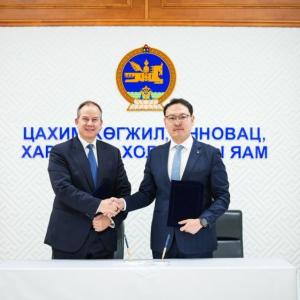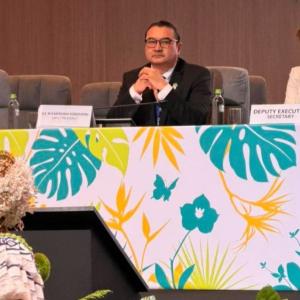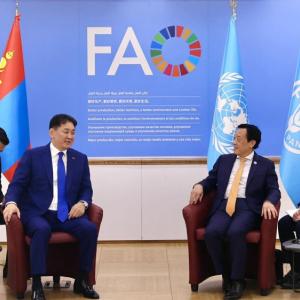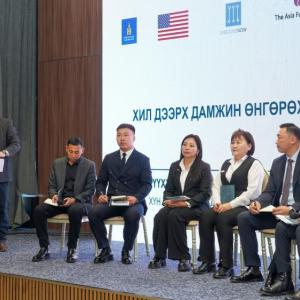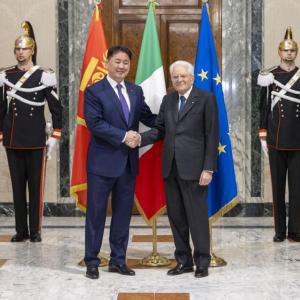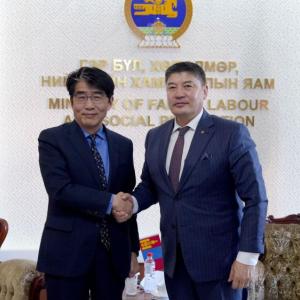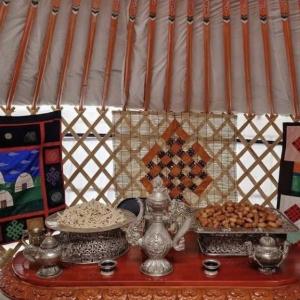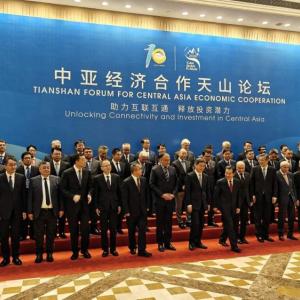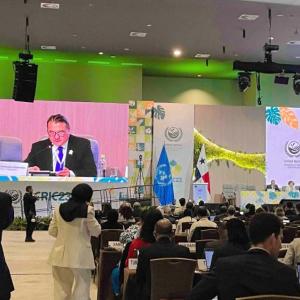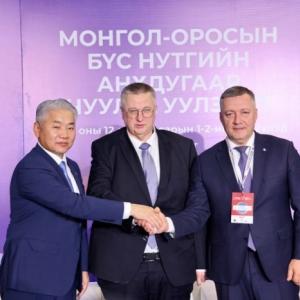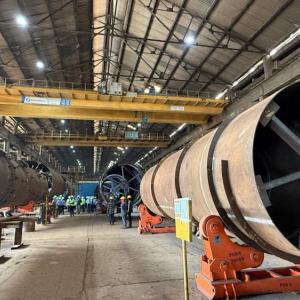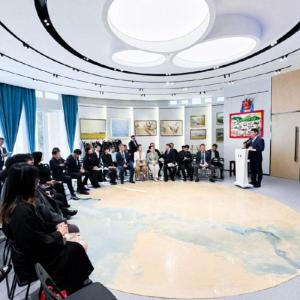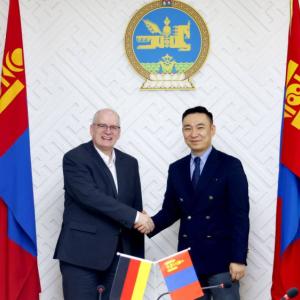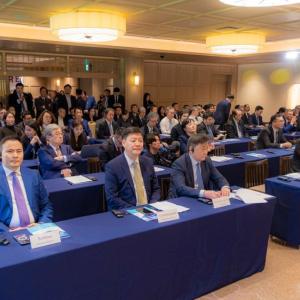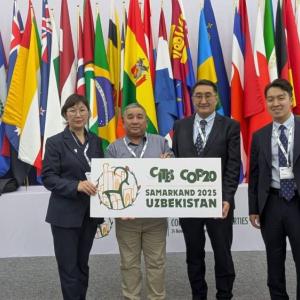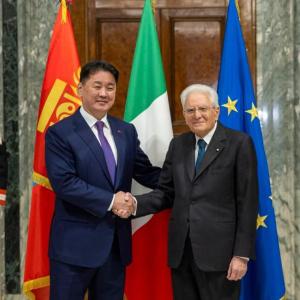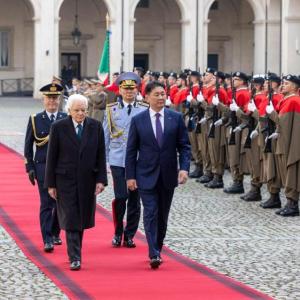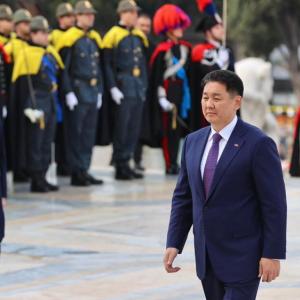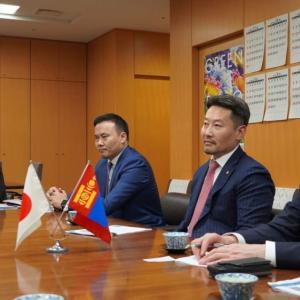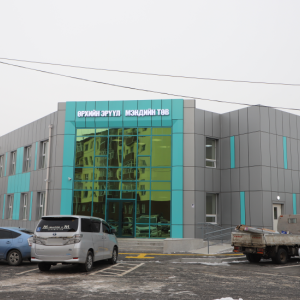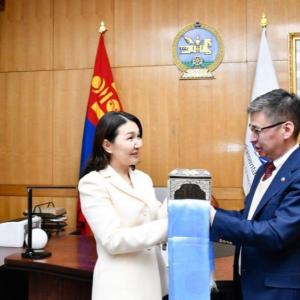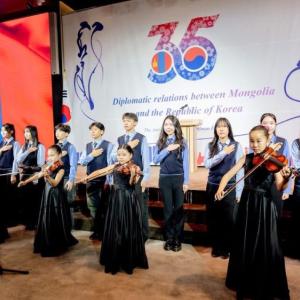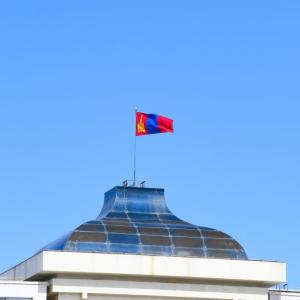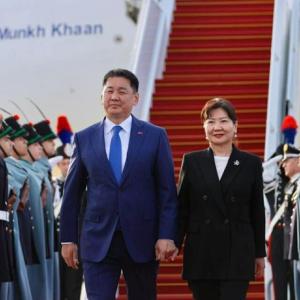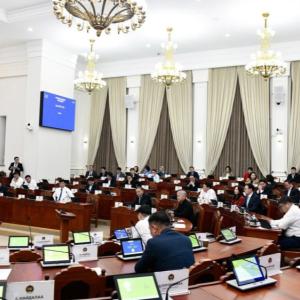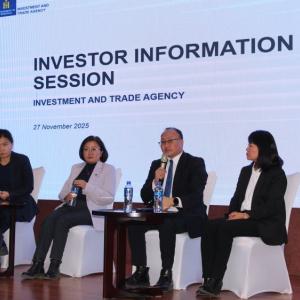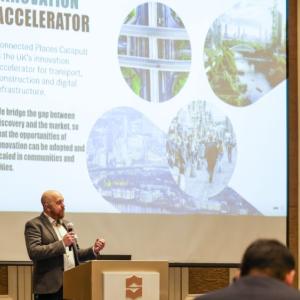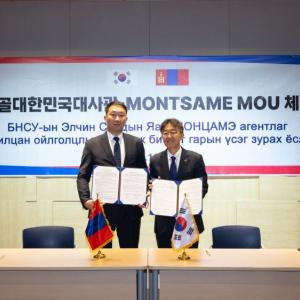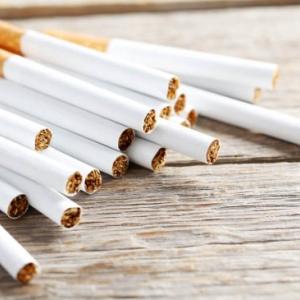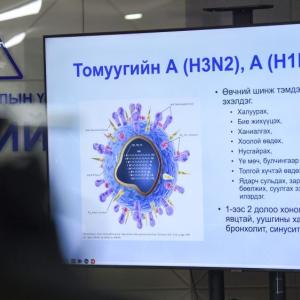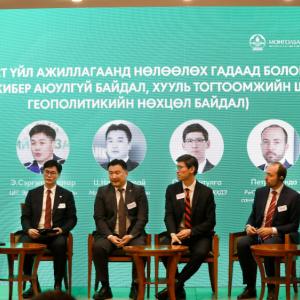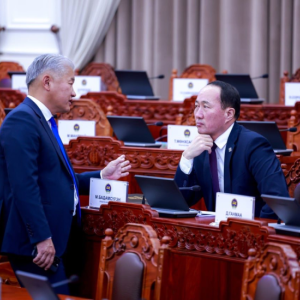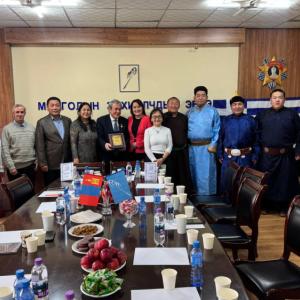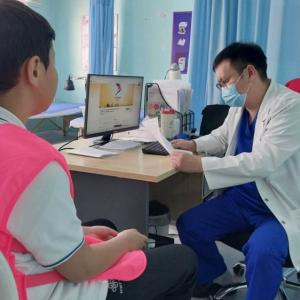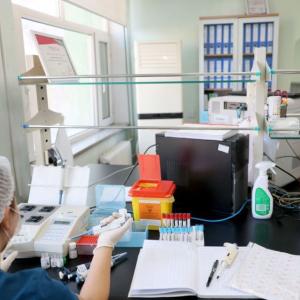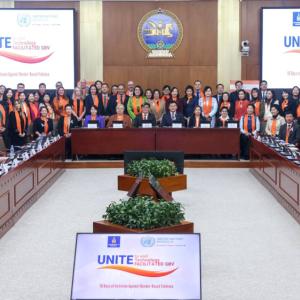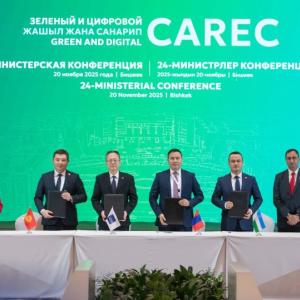Mongolia now has a roadmap for the sustainable development of the cashmere sector
Economy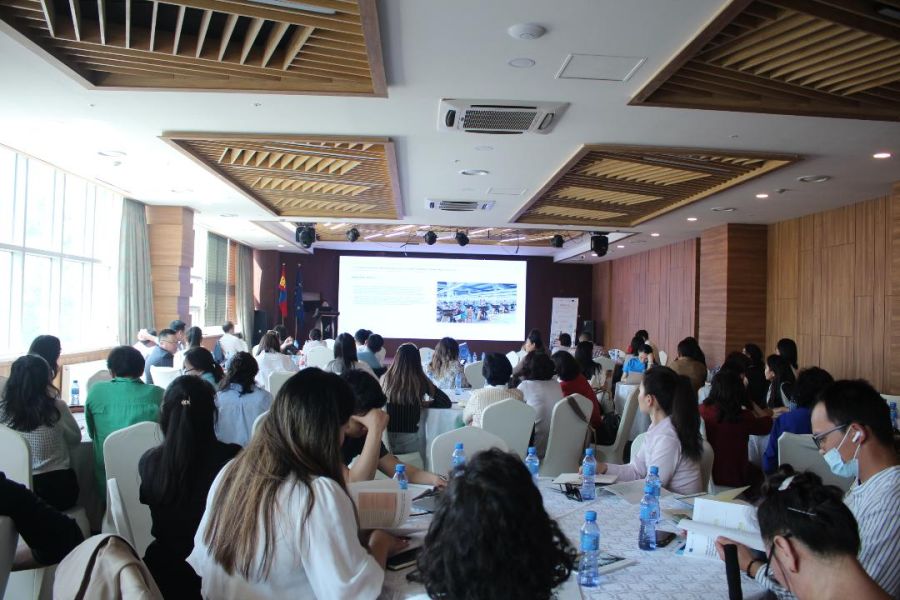
Ulaanbaatar/MONTSAME/. By the initiative of the European Union funded “Sustainable Textile Production and Ecolabelling project (STePEcoLab)”, the “Roadmap for the Sustainable Development of the Mongolian Cashmere Sector - 2030” has been developed in collaboration with relevant ministries, agencies, professional associations and experts.
 As a result, the government
policies and programs, international assistance, and consumer needs
and demands have been harmoniously planned, and stakeholders have defined a
common vision and a clear path to achieve it. The
roadmap supports environmentally friendly production at all stages of value
chain - starting from the preparation and supply of raw materials at herder
level and promote sustainable consumption until the end of the line.
As a result, the government
policies and programs, international assistance, and consumer needs
and demands have been harmoniously planned, and stakeholders have defined a
common vision and a clear path to achieve it. The
roadmap supports environmentally friendly production at all stages of value
chain - starting from the preparation and supply of raw materials at herder
level and promote sustainable consumption until the end of the line.

During the Roadmap launch event, J. Bat-Erdene,
Member of Parliament and President of the Mongolian Wool and Cashmere
Association (MWCA), emphasized “The wool and cashmere sector, with more than 10,000
employees and 400 million USD in sales, takes the second place after the mining
sector by the contribution to the development of the country. The “Roadmap for the Sustainable Development of the
Mongolian Cashmere Sector 2030”
is the first “sustainable development” document in the light industry sector. The
particular importance of this roadmap is the definition of the vision, mission
and medium and short-term goals and objectives for the environmentally friendly
and sustainable development of the Mongolian wool and cashmere industry until
2030. Representatives of international projects and programs,
public and private sectors and professional associations were actively involved
in the development of the roadmap, and the MWCA will undoubtedly play a role of
a leader and initiator in the implementation of its’ activities in the sector.”
in his speech.

H.E Ms Axelle Nicaise, Ambassador of the European Union to Mongolia: “Mongolian cashmere is a unique product and is important not only for the livelihood of herders, but also for the economy and value chain of the country. On the other hand, cashmere production has an impact on the environment. Therefore, we must focus on sustainable cashmere production, with quality over quantity to achieve more with less. If we do not take action now, natural resource will further degrade and pasture deterioration will worsen. The adoption of this ‘Roadmap for the Sustainable Development of the Mongolian Cashmere Sector 2030’ will be an important impetus for environmental protection. Mongolia is a beneficiary of the GSP+, the EU’s preferential trade scheme through which certain products can be exported to the EU-market tariff-free. The textile sector is currently the largest beneficiary of the trade scheme. We are currently in the process of negotiating Geographical Indications (GI) for a comprehensive list of products from Mongolia, among which cashmere is on the top of the list. ‘Uvs Chatsargana’ seabuckthorn berries from Uvs aimag, have been registered in the EU as the first Protected GI from Mongolia. PGI can bring the advantage of increasing the income of local producers, supporting sustainable business, preserving the uniqueness and quality due to the environment and climate, creating new opportunities, opening bigger markets and ensuring customers’ use of quality and standard products. The GI is a socially, environmentally and geographically important indicator. We hope that the beneficiaries of the project will continue to gain from our efforts going forward.”


Mr. G. Batsuuri, Deputy
Minister of the MoFALI: “At a time when global consumers value “environmentally
friendly and sustainable production-consumption” due to the global warming and
climate change, one step towards making wool and cashmere sector of Mongolia a priority has
been taken. Within the framework of the EU-funded “Sustainable
Textile Production and Ecolabelling project (StePEcoLab)”, a “Roadmap for the Sustainable Development of the
Mongolian Cashmere Sector 2030”
has been developed. This roadmap identifies where, when, and how each
stakeholder in the sector can contribute to better coordination of the
Mongolian wool and cashmere industry by 2030. It
is a key document for the activities in conformity with the
government policies and strategies in
the field of agriculture and animal husbandry, and cooperation between herders,
producers, research and government organizations, professional associations and
international projects and programs.”

Mrs. D. Altantsetseg,
Executive Director, Mongolian Wool and Cashmere Association:
“In recent years, consumers have
tended to buy environmentally friendly and sustainable products. Therefore, we
will be fully
able to compete in the world market, if we set the main
criteria that Mongolian cashmere is of the highest quality, environmentally
friendly and sustainable. Mongolian cashmere
products are exported to 30 countries around the world. As a
result, sales of one trillion and 200 billion MNT were made.
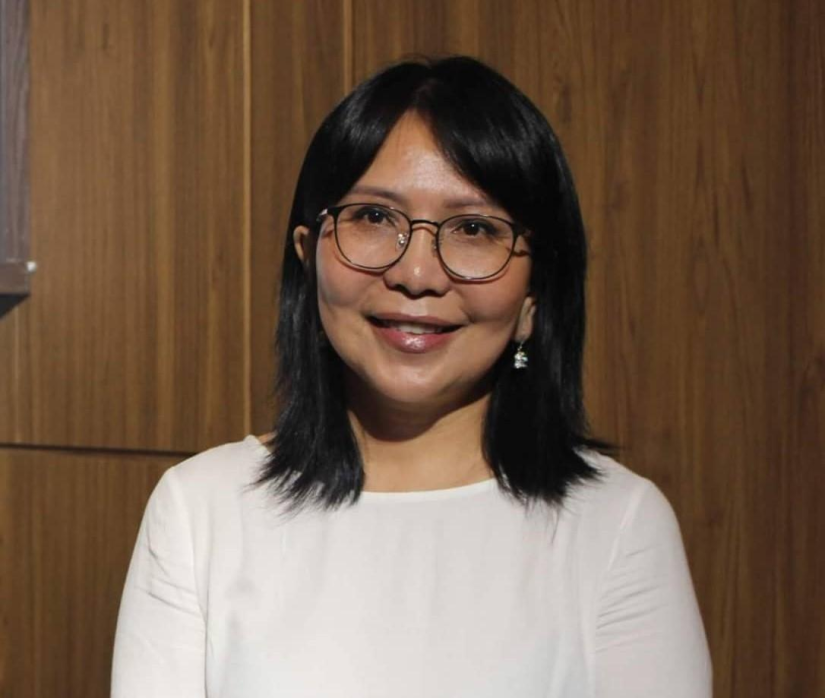
Dr. Ts. Enkh-Amgalan, Chairwoman,
National Federation
of Pasture Users’ Groups:
Climate change and consumer trends in any industry require a clear and
intelligent production system that is environmentally friendly, healthy and
safe for the human being, and has a traceability system. In this context, having
a roadmap for the
Sustainable Development of the Cashmere Sector means Mongolia has
been renewing its strategy to bring its cashmere production to the world
market. Previously, our country was known as a supplier of raw
materials to the international market, but now we guarantee distinctive features of the final products.
Sustainable
Textile Production and Ecolabelling project (STePEcoLab): The STeP EcoLab project, funded by the European Union and
implemented by AVSF, aims at supporting the supply chain and the textile
industry in adopting more sustainable sourcing and production practices and
simultaneously improving the branding for sustainable products, optimising
cost-saving measures and reaching out to climate finance and diversify the
portfolio of customers. STeP EcoLab strives to leverage key drivers of
sustainable consumption and production in Mongolia by consolidating sustainable
and certified raw material sourcing options meeting markets expectations;
developing a conducive environment for textile processing SMEs to switch to
sustainable production practices; and raising customers’ and consumers’
awareness of Mongolian sustainable textile related initiatives.
P. Narandelger
 Ulaanbaatar
Ulaanbaatar








